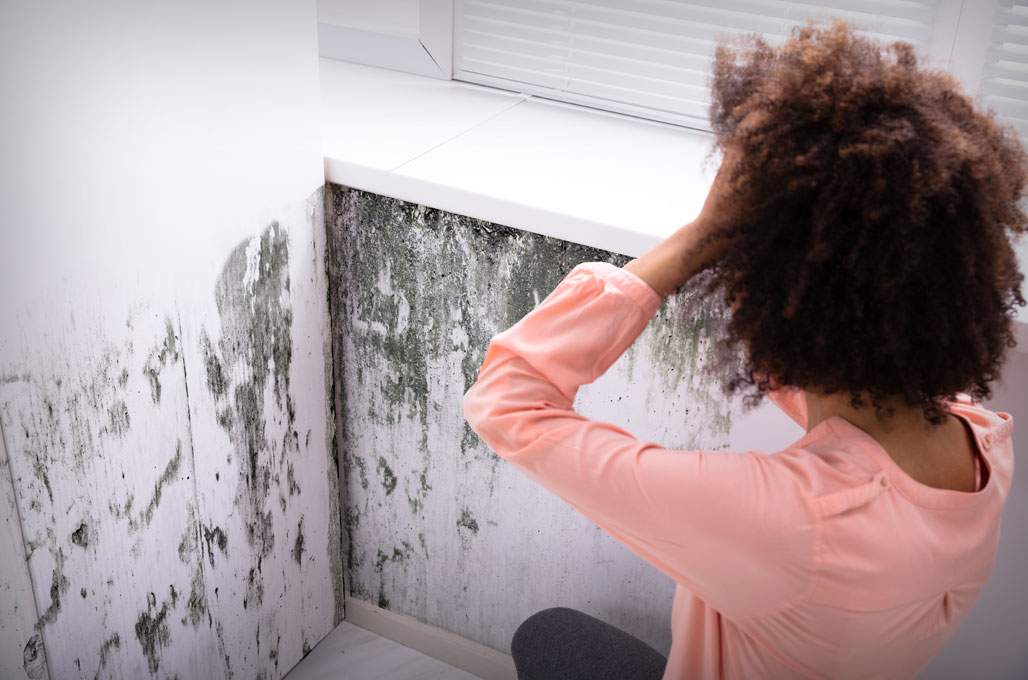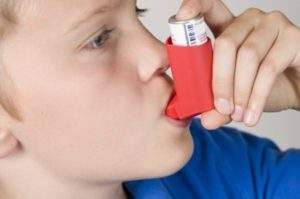Black Mold Identification and Solutions

The term “black mold” strikes fear into any property owner. We’ve all heard that black mold is the worst of the worst, though many of us are unaware of exactly why. Here, we cover what exactly black mold is, how to identify it, what health risks it presents, and how to get rid of it.
What is Black Mold?
Black mold is the general name given to several species of mold that have a dark green or black appearance. The species of mold most people are referring to when speaking about “black mold” is Stachybotrys chartarum.
How to Identify Black Mold
The best way to identify dangerous black mold is to bring in professionals for a full black mold inspection. They will be able to determine exactly what strain you’re dealing with and plan for its removal. However, an untrained eye can make an educated guess based on color. Other species of mold that grow in the home will be gray, white, brown, or pink. Stachybotrys is distinctively black or very dark green. Additionally, black mold does not have the fuzzy texture characteristic of some other strains of mold.
You will see it in dark, poorly ventilated areas. It can grow on many surfaces, including walls, floors, ceilings, wood framing, and inside of drywall. It can also be present on other surfaces, such as old paper products.
Health Risks of Black Mold Exposure

Common symptoms of black mold poisoning for anyone, regardless of existing allergies or asthma, include:
- Respiratory problems, such as coughing and wheezing
- Sinus congestion
- Itchy eyes and skin
For those with mold allergies or compromised immune systems, symptoms can be much worse, and include:
- Headaches
- More severe respiratory symptoms, including difficulty breathing
- Chronic sinus problems
- Fever
- Chronic fatigue
Long-term exposure is dangerous both for those with and without preexisting conditions. Worsening respiratory function and sinus problems are often seen with long-term exposure, and effects of long-term black mold exposure can even include damage to the brain and nervous system.
If you suspect that you have black mold poisoning, your doctor can perform a blood allergy test that may indicate the presence of this level of mold reaction. This, in conjunction with a professional assessment of the level of mold in your house, can give you and your doctor a good idea of whether you are suffering from black mold poisoning.
Because these health problems can be serious, it is very important to address black mold as soon as it is identified, or even suspected.
How to Get Rid of Black Mold

Generally if the mold is contained to a small area there are some steps you can take to get rid of black mold on your own. Not sure? In this video, Travis provides insight on whether mold cleanup is a DIY activity. The following are steps you’ll want to take if you are cleaning up black mold on your own.
Protect Yourself
You’re going to be at risk of inhaling more spores than usual, as they’re going to be disturbed and stirred up into the air. Wear a protective respirator mask and gloves, at the very least. Ideally, invest in a full mold-resistant suit. Wear boots that you are not wearing into other areas of the home, so as not to track the spores around.
Remove Sources of Moisture
If you have not yet addressed the problem that led to the growth of mold in the first place, do so now. So long as that moisture continues to accumulate, the mold will continue to grow, and your efforts will have been for naught.
Clear the Area
Remove everything that has not been contaminated from the room. Keep in mind that mold spores aren’t always visible, and you should take care to clean and disinfect these items, too, if possible.
Seal the Room
Using plastic sheets and duct tape, seal off the room completely. Place plastic sheets on windows and over door frames.
Purify the Air
Mold spores float around in the air, thus the respiratory symptoms inhabitants of mold-infested spaces experience. Because of this, you’re going to need to clean both the air and surfaces. Use a HEPA air purifier to clean the air of these spores.
Remove Damaged Drywall
Cut away drywall which has been damaged by mold. Once you have gotten rid of the rest of the mold in the space, go ahead and replace the drywall. This is an area which may be best suited for professional attention, as mold growth inside of drywall can be quite extensive, and you don’t want to clean the entire space only to have the problem come back because of an infested area of drywall.
Scrub and Bleach
The Center for Disease Control recommends scrubbing all affected surfaces with detergent and water. Once this step is completed, coat all nonporous surfaces with a 1-8 bleach-to-water solution or a fungicidal agent. Hardware stores carry various fungicidal agents that can kill mold without discoloring your possessions, as bleach will, so be careful with your possessions when taking this step.
Set out a dehumidifier and wait for these areas to dry before cleaning and rebuilding the space.
Black mold can present serious problems and impact the health of anyone living or working in a space containing it. In order to be sure really get to the bottom of your black mold problem, it’s a good idea to bring in a professional mold remediation company. Contact Abbotts today for a free consultation.

